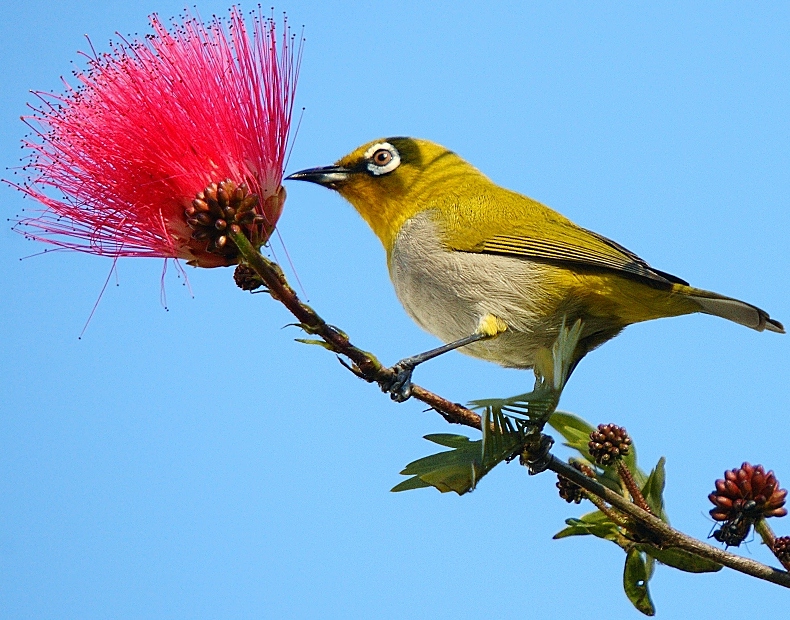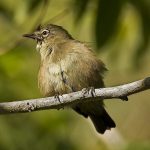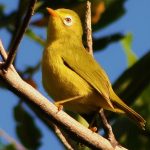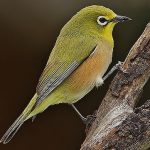Oriental white-eye

 |
| Photo by Rajiv Lather (Birding in India and South Asia) |
Common name:
oriental white-eye (en); olho-branco-oriental (pt); zostérops oriental (fr); anteojitos oriental (es); Ganges-brillenvogel (de)
Taxonomy:
Order Passeriformes
Family Zosteropidae
Range:
This species is found in southern Asia, from Pakistan and India to southern China and south to southern Indonesia.
Size:
These birds are 8-11 cm long and weigh 8-10 g.
Habitat:
Oriental white-eyes are found moist tropical forests, mangroves and moist scrublands.
Diet:
They mainly feed on small insects, especially ants, but also the nectar, fruits, seeds, buds and pollen of plants such as giant mahang Macaranga gigantea, umbrella tree Schefflera actinophylla and pink mempat Cratoxylum formosum.
Breeding:
The oriental white-eye breeds in February-September. The nest is a compact cup made of grass, plant fibres, roots and cotton down and spider webs, usually placed in a fork in a scrub or trees 1–10 m above the ground. There the female lays 2-3 pale blue eggs, which are incubated for 10-11 days. The chicks are fed and brooded by both parents and fledge about 10 days after hatching.
Conservation:
IUCN status – LC (Least Concern)
This species has a very large breeding range and is described as common. The population is suspected to be in decline owing to ongoing habitat destruction and fragmentation of forest and mangrove habitats, as well as illegal trapping for the cage bird trade.































